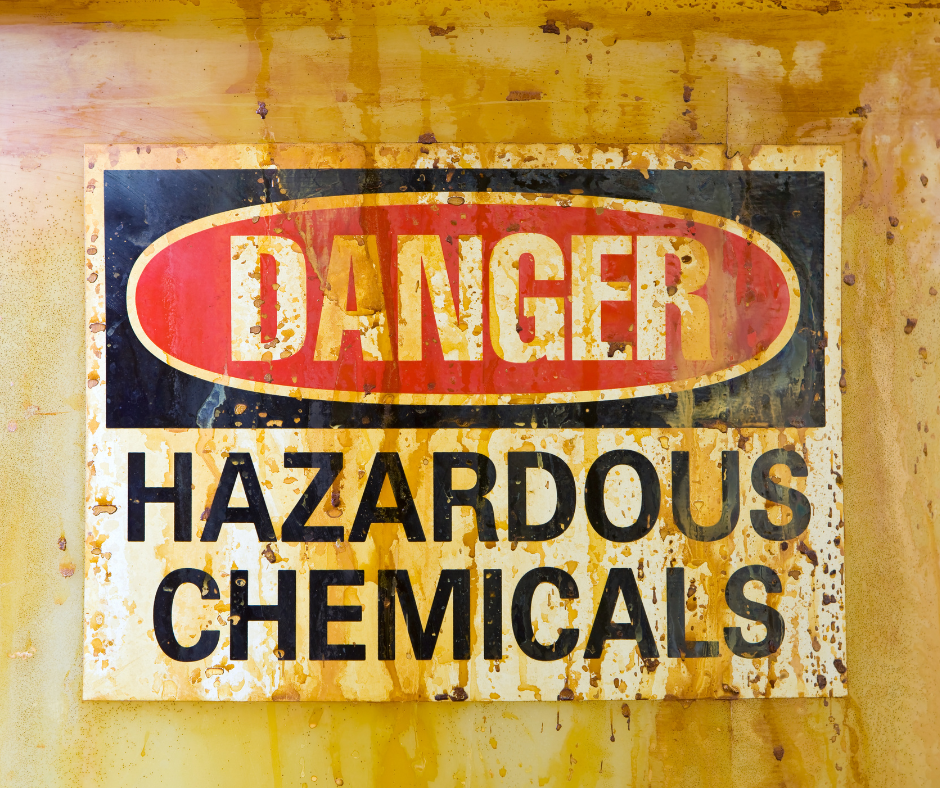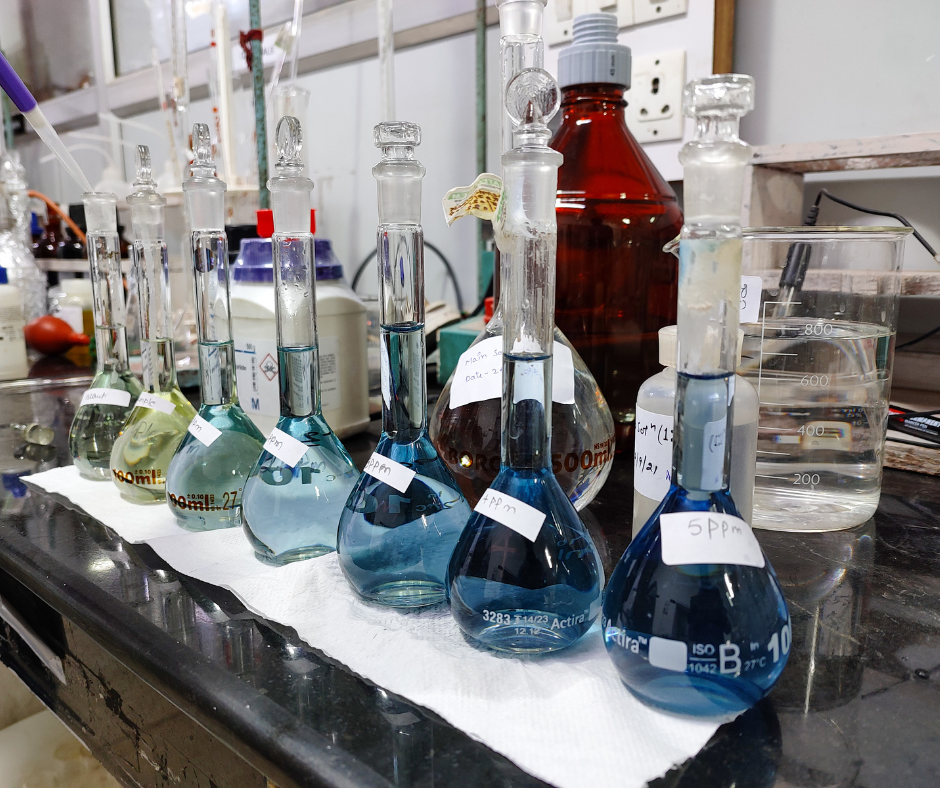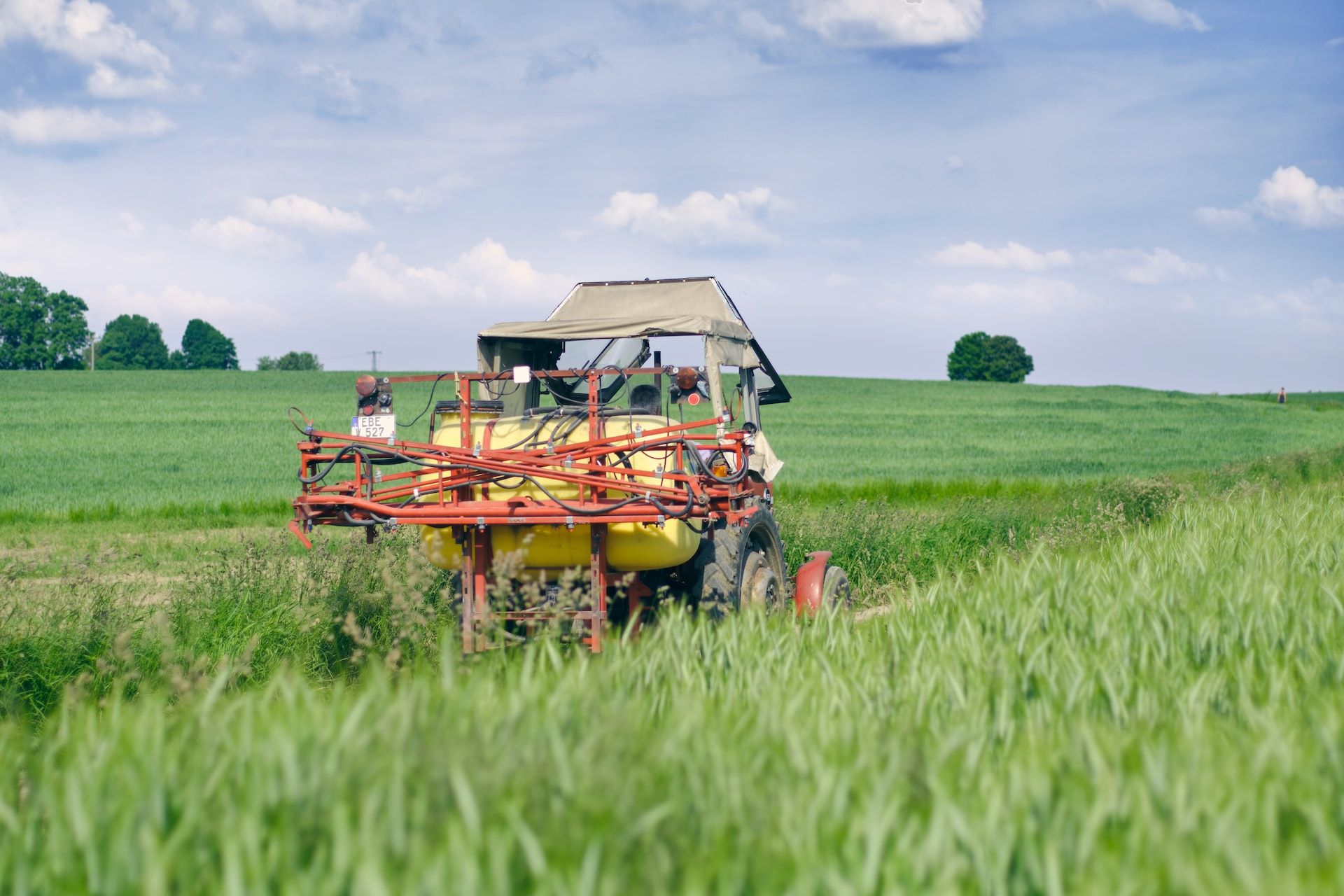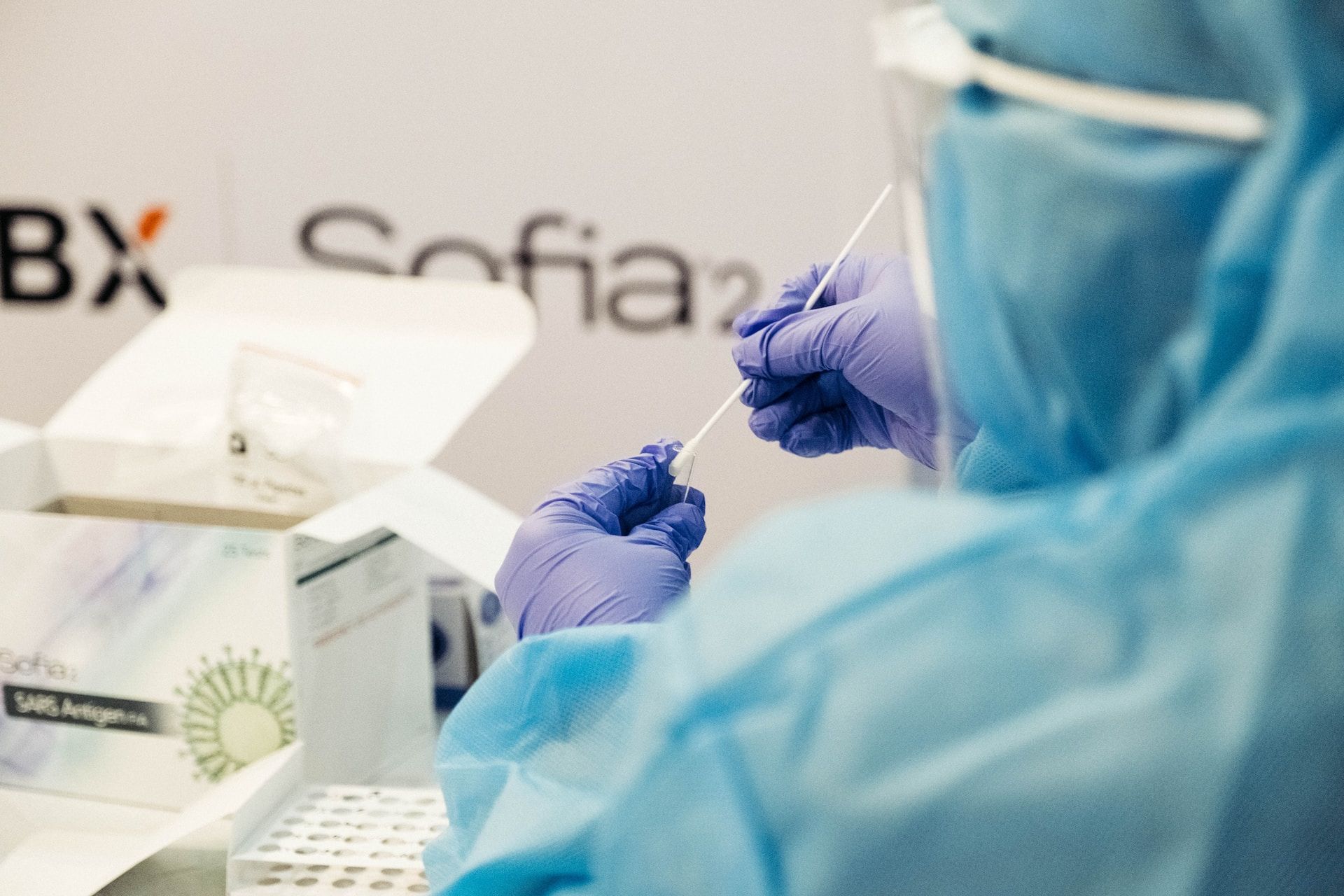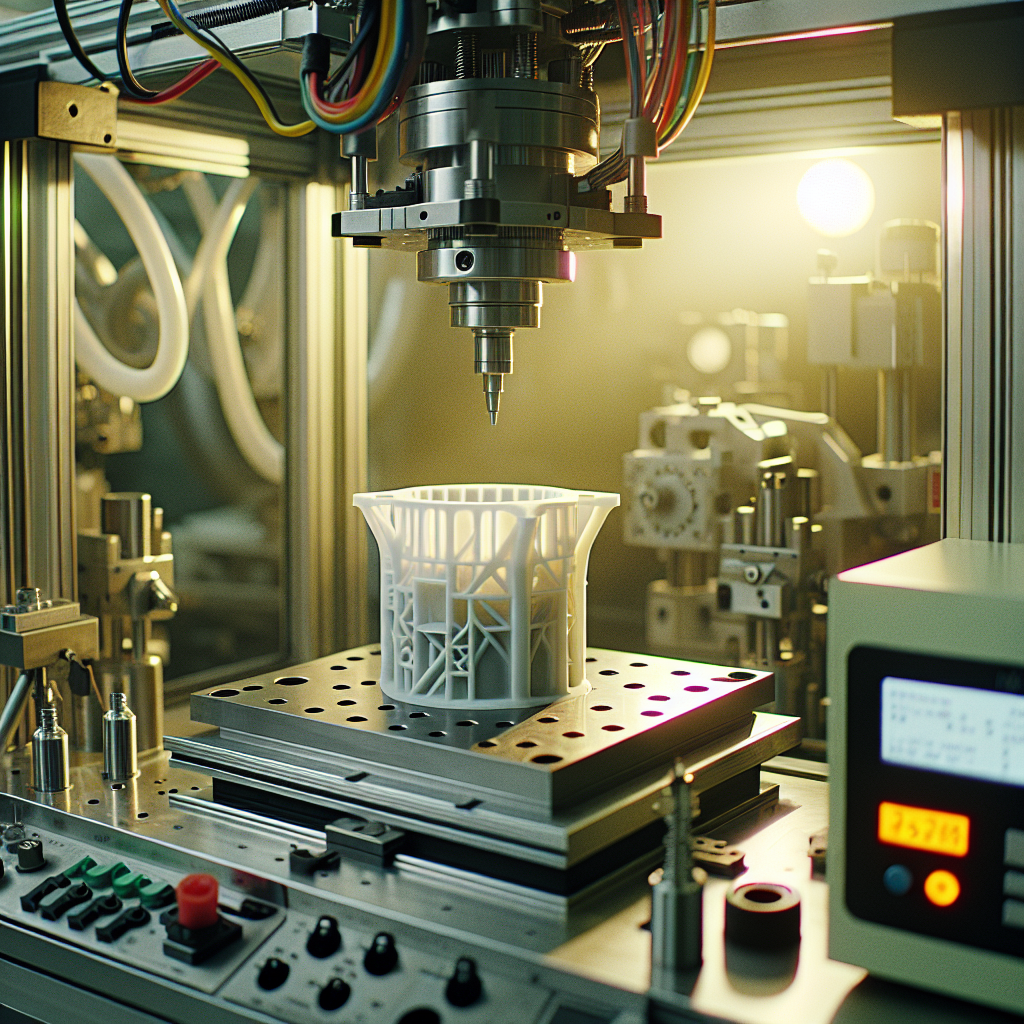Personal protective equipment (PPE) is essential in various industries to protect workers from hazards that can cause accidents and injuries.
Furthermore, PPE includes various products such as gloves, safety glasses, respirators, and protective clothing, which are designed to provide a barrier between the worker and the hazardous environment.
PPE manufacturing plays a crucial role in ensuring the safety and health of workers by producing high-quality PPE that meets the necessary regulations and standards.
In this article, we will discuss thoroughly about PPE manufacturing and its associated concepts. Before we dive in, let's take a look at the table of content below:
- Meaning of PPE in Manufacturing?
- Significance of PPE in Manufacturing
- Important Examples of PPE for Manufacturing
- Guidelines for Properly Implementing Manufacturing PPE in the Workplace
- Different Types of PPE and the Materials Used in their Manufacturing
- Regulations and Standards that PPE Manufacturers Must Follow
- Role of PPE in Preventing Workplace Accidents and Injuries
- Impact of PPE on the Environment and the Steps to reduce their Carbon footprint
- Challenges Faced by PPE Manufacturers & its Solutions
- Need for Innovation in PPE Manufacturing
- Initiatives taken by Governments and Organizations to Support PPE Manufacturers and Overcome these Challenges
- Frequently Asked Questions (FAQs) Associated with PPE Manufacturing
- Wrapping Up
- How Deskera Can Assist You?
Let's get started!
Meaning of PPE in Manufacturing?
PPE stands for Personal Protective Equipment, which refers to the protective clothing, equipment, and accessories worn by workers in various industries to protect themselves from workplace hazards that could cause harm to their health or safety.
In manufacturing, PPE can include items such as safety glasses, gloves, hard hats, respirators, and earplugs, among others. PPE is essential in manufacturing as it helps to reduce the risk of workplace accidents, injuries, and illnesses.
Furthermore, it also helps to ensure compliance with regulatory requirements and standards for workplace safety. The proper selection, use, and maintenance of PPE is critical to the effectiveness of the protective gear and the safety of workers.
Significance of PPE in Manufacturing
Personal Protective Equipment (PPE) is essential in manufacturing industries to protect workers from various hazards that could cause harm to their health or safety. Here are some of the reasons why PPE is important in manufacturing:
Protects against physical hazards:
PPE, such as hard hats, safety glasses, and steel-toed boots, protects workers from physical hazards, such as falling objects, debris, and sharp objects. These hazards are common in manufacturing industries, and PPE can help prevent injuries and accidents.
Reduces the risk of exposure to harmful substances:
Many manufacturing processes involve exposure to harmful substances, such as chemicals, gases, and fumes, which can cause health problems, such as respiratory illnesses, skin irritation, and cancer. PPE, such as respirators, gloves, and protective clothing, can help protect workers from these harmful substances.
Ensures compliance with safety regulations:
PPE is often required by law and safety regulations in manufacturing industries to protect workers. Failure to comply with safety regulations can result in fines, penalties, and legal liabilities.
Increases worker confidence and productivity:
When workers feel safe and protected, they are more confident in their work and can be more productive. PPE can help reduce stress and anxiety, which can affect worker productivity.
Prevents cross-contamination:
In industries such as food manufacturing and pharmaceuticals, PPE is used to prevent cross-contamination between products and workers. PPE, such as gloves, hairnets, and face masks, can help prevent the spread of bacteria and other contaminants.
In conclusion, PPE is essential in manufacturing industries to protect workers from various hazards and ensure compliance with safety regulations. The proper selection, use, and maintenance of PPE is critical to the effectiveness of the protective gear and the safety of workers.
Important Examples of PPE for Manufacturing
There are several types of PPE that are commonly used in manufacturing industries to protect workers from various hazards. Here are some examples of PPE for manufacturing:
Eye and face protection: Safety glasses, goggles, face shields, and welding helmets are used to protect workers' eyes and face from flying debris, chemical splashes, and radiation.
Hearing protection: Earplugs and earmuffs are used to protect workers' ears from loud noises and prevent hearing loss.
Respiratory protection: Respirators, such as N95 masks, half-face and full-face respirators, and supplied air systems, are used to protect workers from harmful dust, fumes, and gases.
Hand protection: Gloves, such as latex, nitrile, and leather gloves, are used to protect workers' hands from cuts, burns, and chemical exposure.
Foot protection: Steel-toed boots, slip-resistant shoes, and foot covers are used to protect workers' feet from falling objects, electrical hazards, and slipping.
Head protection: Hard hats are used to protect workers' heads from falling objects, bumps, and electrical hazards.
Body protection: Coveralls, aprons, and vests are used to protect workers' bodies from chemical splashes, heat, and cold.
Ultimately, PPE is essential in manufacturing industries, and the proper selection, use, and maintenance of PPE is critical to the effectiveness of the protective gear and the safety of workers. Employers should provide appropriate PPE to their workers, train them on how to use it properly, and ensure that it is maintained and replaced as needed.
Guidelines for Properly Implementing Manufacturing PPE in the Workplace
Proper administration of PPE in the workplace is essential to ensure that workers are protected from hazards and comply with safety regulations. Here are some steps to administering manufacturing PPE properly in the workplace:
Identify hazards: Conduct a hazard assessment to identify potential hazards in the workplace and determine the appropriate PPE required to protect workers from these hazards.
Select appropriate PPE: Select the appropriate PPE based on the hazard assessment and the job task. Ensure that the PPE meets safety standards and regulations.
Train employees: Train employees on how to use the PPE correctly, including how to put it on, adjust it, and take it off. Train them on the limitations of the PPE and how to care for it properly.
Provide the PPE: Provide the required PPE to employees and ensure that it fits properly and is comfortable to wear. Replace damaged or worn-out PPE as needed.
Enforce the use of PPE: Enforce the use of PPE in the workplace and ensure that employees wear it correctly and consistently. Make sure that supervisors and managers lead by example and wear the appropriate PPE.
Monitor compliance: Monitor compliance with PPE use and identify any areas where improvements can be made. Provide feedback to employees and supervisors to encourage compliance.
Evaluate effectiveness: Regularly evaluate the effectiveness of the PPE program and make adjustments as needed to ensure that workers are protected from hazards.
In conclusion, proper administration of PPE in the workplace is essential to protect workers from hazards and ensure compliance with safety regulations. Employers should conduct a hazard assessment, select appropriate PPE, train employees, enforce the use of PPE, monitor compliance, and evaluate the effectiveness of the PPE program.
Different Types of PPE and the Materials Used in their Manufacturing
Personal Protective Equipment (PPE) is designed to protect workers from various hazards in the workplace, such as physical, chemical, biological, and radiological hazards. Here are some types of PPE and the materials used in their manufacturing:
Eye and face protection: Safety glasses, goggles, face shields, and welding helmets are made of materials such as polycarbonate, acetate, and propionate. These materials provide impact resistance, chemical resistance, and optical clarity.
Hearing protection: Earplugs and earmuffs are made of materials such as foam, silicone, and plastic. These materials provide noise reduction, comfort, and durability.
Respiratory protection: Respirators are made of materials such as rubber, silicone, and neoprene. The filter media is made of materials such as activated carbon, HEPA filters, and chemical cartridges. These materials provide protection against dust, fumes, and gases.
Hand protection: Gloves are made of materials such as latex, nitrile, leather, and rubber. These materials provide protection against cuts, punctures, chemical exposure, and heat.
Foot protection: Steel-toed boots are made of materials such as leather, rubber, and synthetic materials. The sole is made of materials such as rubber, PVC, and TPU. These materials provide protection against falling objects, electrical hazards, and slips.
Head protection: Hard hats are made of materials such as high-density polyethylene (HDPE), polycarbonate, and fiberglass. These materials provide impact resistance, heat resistance, and electrical insulation.
Body protection: Coveralls, aprons, and vests are made of materials such as cotton, polyester, and polypropylene. These materials provide protection against chemical exposure, heat, and cold.
In conclusion, PPE is made of various materials depending on the type of PPE and the hazards it is designed to protect against. Employers should ensure that the materials used in PPE are appropriate for the hazards present in the workplace and meet safety standards and regulations. The proper selection, use, and maintenance of PPE is critical to the effectiveness of the protective gear and the safety of workers.
Regulations and Standards that PPE Manufacturers Must Follow
PPE manufacturers must adhere to various regulations and standards to ensure that their products are safe and effective. Here are some examples of regulations and standards that PPE manufacturers must comply with:
OSHA regulations: The Occupational Safety and Health Administration (OSHA) sets standards for PPE use in the workplace, including requirements for eye and face protection, respiratory protection, hearing protection, and hand protection.
ANSI standards: The American National Standards Institute (ANSI) sets standards for PPE, including specifications for materials, design, and performance. ANSI standards cover PPE such as eye and face protection, respiratory protection, hearing protection, and foot protection.
NIOSH certifications: The National Institute for Occupational Safety and Health (NIOSH) certifies respirators and other PPE based on their effectiveness against specific hazards. NIOSH certifications ensure that PPE meets specific performance criteria.

CE marking: The CE marking is a certification mark that indicates that PPE meets the health, safety, and environmental protection standards of the European Union. PPE that carries the CE marking can be sold in the European Union.
FDA regulations: The Food and Drug Administration (FDA) regulates certain types of PPE, such as medical gloves and surgical masks. The FDA sets standards for these products to ensure their safety and effectiveness.
ISO standards: The International Organization for Standardization (ISO) sets standards for PPE, including specifications for materials, design, and performance. ISO standards cover PPE such as eye and face protection, respiratory protection, and hearing protection.
In conclusion, PPE manufacturers must comply with various regulations and standards to ensure that their products are safe and effective. These regulations and standards cover various types of PPE and specify materials, design, and performance criteria. Employers should ensure that the PPE they provide to their workers meets these regulations and standards to ensure the safety of their workers.
Role of PPE in Preventing Workplace Accidents and Injuries
Personal Protective Equipment (PPE) plays a crucial role in preventing workplace accidents and injuries by providing a barrier between workers and the hazards they face on the job. Here are some ways in which PPE helps to prevent workplace accidents and injuries:
Protects against physical hazards: PPE such as hard hats, safety glasses, and steel-toed boots protects workers against falling objects, cuts, punctures, and other physical hazards. This reduces the risk of head injuries, eye injuries, and foot injuries.
Protects against chemical and biological hazards: PPE such as gloves, respirators, and coveralls protects workers against exposure to hazardous chemicals and biological agents. This reduces the risk of chemical burns, respiratory problems, and infections.
Protects against radiation: PPE such as lead aprons and goggles protects workers against exposure to radiation in industries such as healthcare and nuclear power. This reduces the risk of radiation sickness and cancer.
Improves visibility: PPE such as high-visibility vests improves the visibility of workers in low-light conditions, reducing the risk of accidents due to poor visibility.
Reduces the spread of disease: PPE such as masks and gloves helps to reduce the spread of infectious diseases, particularly in healthcare settings.
However, it is important to note that PPE should not be the first line of defense against workplace hazards. Employers should implement engineering and administrative controls to eliminate or reduce hazards before relying on PPE.
Additionally, PPE is only effective if it is selected, used, and maintained properly. Employers should provide adequate training to workers on the proper use and maintenance of PPE.
In conclusion, PPE plays a vital role in preventing workplace accidents and injuries by providing a barrier between workers and the hazards they face on the job. However, PPE should not be relied on as the sole method of protection, and employers should implement other controls to eliminate or reduce hazards. Proper selection, use, and maintenance of PPE are crucial to its effectiveness.
Impact of PPE on the Environment and the Steps to reduce their Carbon footprint
PPE manufacturing can have a significant impact on the environment due to the use of non-renewable resources, energy consumption, and waste generation. Here are some of the ways in which PPE can impact the environment:
Use of non-renewable resources:
PPE is often made from non-renewable resources such as petroleum-based plastics and synthetic rubber, which are finite resources.
Energy consumption:
The manufacturing of PPE requires significant amounts of energy, which contributes to greenhouse gas emissions and climate change.
Waste generation:
PPE can generate a significant amount of waste, including packaging materials and discarded products. Furthermore, to reduce their environmental impact, PPE manufacturers have taken several steps to reduce their carbon footprint, including:
Use of sustainable materials:
PPE manufacturers are exploring the use of sustainable materials, such as recycled plastic, bamboo, and other plant-based materials, to reduce their reliance on non-renewable resources.
Energy-efficient production:
Manufacturers are adopting energy-efficient production methods, such as using renewable energy sources and optimizing production processes to reduce energy consumption and greenhouse gas emissions.
Product design for reuse or recycling:
Manufacturers are designing PPE products that can be reused or recycled, reducing the amount of waste generated.
Reduction of packaging materials:
Manufacturers are reducing the amount of packaging materials used for PPE products and exploring eco-friendly packaging options, such as biodegradable and compostable materials.
Corporate sustainability initiatives:
PPE manufacturers are implementing corporate sustainability initiatives to reduce their overall environmental impact, including reducing greenhouse gas emissions, conserving energy and water, and reducing waste.
In conclusion, PPE manufacturing can have a significant impact on the environment, but manufacturers are taking steps to reduce their carbon footprint. The use of sustainable materials, energy-efficient production methods, product design for reuse or recycling, reduction of packaging materials, and corporate sustainability initiatives are some of the ways in which manufacturers are reducing their environmental impact.
Challenges Faced by PPE Manufacturers & its Solutions
PPE manufacturers face a range of challenges that can impact their ability to produce and distribute products effectively. Some of the main challenges include:
Shortages of raw materials:
The manufacturing of PPE requires a range of raw materials, including plastics, rubber, and metals, which can be subject to shortages due to high demand, supply chain disruptions, or geopolitical issues.
Supply chain disruptions:
PPE manufacturers rely on a complex global supply chain to source raw materials and distribute finished products. Disruptions to this supply chain, such as transportation disruptions, trade restrictions, or border closures, can impact the availability of PPE products.
Increased demand:
The COVID-19 pandemic has led to a surge in demand for PPE products, putting pressure on manufacturers to increase production quickly. This has resulted in challenges such as shortages of materials, production backlogs, and distribution challenges.
Quality control:
PPE products must meet stringent quality standards to ensure they provide adequate protection to users. Manufacturers must maintain high levels of quality control to ensure their products meet these standards and avoid the risk of liability.
Compliance with regulations:
PPE manufacturers must comply with a range of regulations and standards, which can vary between countries and regions. This requires significant investment in testing and certification to ensure their products meet these requirements.
To overcome these challenges, PPE manufacturers may need to adopt strategies such as diversifying their supply chain, investing in new production technologies, collaborating with other manufacturers, and building relationships with regulators to ensure compliance with regulations.
In conclusion, PPE manufacturers face a range of challenges that can impact their ability to produce and distribute products effectively. Shortages of raw materials, supply chain disruptions, increased demand, quality control, and compliance with regulations are some of the key challenges. To overcome these challenges, manufacturers must be innovative and flexible, adopting strategies that help them to mitigate risks and respond to changing market conditions.
Solutions to these Challenges
Here are some solutions to the challenges faced by PPE manufacturers:
Shortages of raw materials: PPE manufacturers can diversify their supply chain to reduce reliance on a single supplier or region. They can also explore alternative materials or consider using recycled materials.
Supply chain disruptions: Manufacturers can build stronger relationships with suppliers and logistics providers, and invest in digital technologies to improve visibility and agility in their supply chain. They can also develop contingency plans to mitigate the impact of disruptions.
Increased demand: Manufacturers can increase production capacity by investing in automation and digitization. They can also collaborate with other manufacturers to share resources and expertise, and leverage technology to optimize their production processes.
Quality control: Manufacturers can implement robust quality control processes, such as regular testing and inspections, to ensure that their products meet regulatory requirements and user expectations. They can also invest in advanced technologies, such as machine learning and artificial intelligence, to improve quality control and reduce the risk of defects.
Compliance with regulations: Manufacturers can work closely with regulators and certification bodies to ensure that their products meet regulatory requirements. They can also invest in testing and certification to ensure compliance and reduce the risk of liability.
In conclusion, PPE manufacturers can overcome the challenges they face by adopting a range of strategies, such as diversifying their supply chain, investing in technology, collaborating with other manufacturers, and implementing robust quality control processes. By doing so, they can ensure that they are able to meet the growing demand for PPE products while maintaining high levels of quality and compliance.
Need for Innovation in PPE Manufacturing
The need for innovation in PPE manufacturing is essential to meet the demands of evolving workplace hazards and environmental concerns. As technology advances and new hazards emerge, PPE manufacturers must continuously adapt their products to provide effective protection to workers. Additionally, with increasing awareness of environmental issues, manufacturers must also consider the sustainability of their products and processes.

Innovation can play a crucial role in addressing these challenges. By investing in research and development, PPE manufacturers can develop new materials and technologies that are more effective, efficient, and environmentally friendly. For example, the use of advanced materials such as graphene and nanotechnology can lead to lighter and stronger PPE products. Innovative technologies such as augmented reality and virtual reality can also enhance training and education for workers.
In addition to product innovation, manufacturers can also focus on sustainable manufacturing processes. This can include reducing waste and energy consumption, using renewable energy sources, and implementing recycling programs.
Moreover, the COVID-19 pandemic has highlighted the need for innovation in PPE manufacturing. Manufacturers have had to adapt quickly to meet the surge in demand for PPE products while also addressing issues related to supply chain disruptions and quality control.
In conclusion, innovation is crucial for PPE manufacturers to meet the evolving demands of workplace hazards and environmental concerns. By investing in research and development, adopting new materials and technologies, and implementing sustainable manufacturing practices, manufacturers can ensure that their products remain effective, efficient, and environmentally friendly. Ultimately, this will help to protect workers while also reducing the impact of PPE manufacturing on the environment.
Initiatives taken by Governments and Organizations to Support PPE Manufacturers and Overcome these Challenges
Governments and organizations have taken several initiatives to support PPE manufacturers and overcome the challenges they face. Some of these initiatives include:
Financial support: Governments have provided financial support to PPE manufacturers through grants, loans, and other forms of financial assistance. This has helped manufacturers to invest in new equipment, expand their production capacity, and develop new products.
Regulatory flexibility: Governments and regulatory bodies have provided flexibility in regulations to speed up the approval process for PPE products. This has allowed manufacturers to bring products to market more quickly and meet the urgent demand for PPE during the COVID-19 pandemic.
Collaboration and partnerships: Governments and organizations have encouraged collaboration and partnerships between manufacturers, suppliers, and other stakeholders in the PPE supply chain. This has helped to streamline supply chain processes, reduce costs, and increase efficiency.
Capacity building: Governments and organizations have provided training and capacity building programs for PPE manufacturers to improve their production processes and quality control.
Information sharing: Governments and organizations have facilitated the sharing of information and best practices among PPE manufacturers to help them learn from each other and improve their operations.
Public awareness campaigns: Governments and organizations have launched public awareness campaigns to highlight the importance of PPE and encourage their use in workplaces. This has helped to increase demand for PPE products and support PPE manufacturers.
In conclusion, governments and organizations have taken several initiatives to support PPE manufacturers and overcome the challenges they face. These initiatives have provided financial support, regulatory flexibility, collaboration and partnerships, capacity building, information sharing, and public awareness campaigns. By working together, manufacturers, governments, and other stakeholders can ensure that workers have access to high-quality PPE products that are effective, efficient, and environmentally friendly.
Frequently Asked Questions (FAQs) Associated with PPE Manufacturing
Following, we've discussed some frequently asked questions about PPE manufacturing with detailed answers:
Que 1: What materials are used in PPE manufacturing?
Answer: Various materials can be used in PPE manufacturing, depending on the type of PPE. For example, common materials for protective gloves include latex, nitrile, and vinyl. Protective clothing can be made from materials such as Tyvek, Kevlar, and Nomex. Respirators can be made with materials such as activated carbon and HEPA filters. Safety glasses and face shields can be made from materials such as polycarbonate and acetate.
Que 2: What standards should PPE manufacturers follow?
Answer: PPE manufacturers should follow standards set by regulatory bodies such as OSHA (Occupational Safety and Health Administration) and ANSI (American National Standards Institute). These standards outline the requirements for PPE in different industries and provide guidelines for the design, testing, and certification of PPE products.
Que 3: How do PPE manufacturers ensure the quality of their products?
Answer: PPE manufacturers ensure the quality of their products by following strict manufacturing processes, conducting rigorous testing and certification, and adhering to industry standards. They also conduct ongoing quality control checks to ensure that their products meet the required standards and perform as intended.
Que 4: How can PPE manufacturers reduce their carbon footprint?
Answer: PPE manufacturers can reduce their carbon footprint by using sustainable materials, reducing waste and energy consumption, using renewable energy sources, implementing recycling programs, and reducing transportation emissions. They can also adopt sustainable manufacturing practices such as lean manufacturing and green chemistry.
Que 4: How has the COVID-19 pandemic impacted PPE manufacturing?
Answer: The COVID-19 pandemic has led to a surge in demand for PPE products, particularly face masks and respirators. This has created challenges for PPE manufacturers, including shortages of raw materials and disruptions in supply chains. Manufacturers have had to adapt quickly to meet the demand and address these challenges.
Que 5: What innovations are happening in PPE manufacturing?
Answer: Innovations in PPE manufacturing include the use of advanced materials such as graphene and nanotechnology, the development of new technologies such as augmented reality and virtual reality for training and education, and the use of sustainable materials and manufacturing processes. Manufacturers are also exploring new designs and features for PPE products to improve their performance and usability.
Que 6: How can workers ensure they are using PPE properly?
Answer: Workers can ensure they are using PPE properly by following the instructions provided by the manufacturer, attending training sessions on the proper use and care of PPE, regularly inspecting and maintaining their PPE, and reporting any issues or concerns to their supervisor. It is also important to ensure that the PPE fits properly and is appropriate for the hazards present in the workplace.
Wrapping Up
In conclusion, PPE manufacturing plays a critical role in ensuring the safety and health of workers in various industries. PPE manufacturers must adhere to strict regulations and standards, as well as innovate to keep up with evolving workplace hazards and environmental concerns.
While the COVID-19 pandemic has presented challenges for PPE manufacturing, manufacturers have adapted and taken steps to meet the surge in demand. It is essential that workers are properly trained and use PPE correctly to maximize its effectiveness.
As the world continues to face new challenges, such as climate change and emerging technologies, PPE manufacturers must continue to innovate and adapt to meet the evolving needs of workers and the environment. Ultimately, prioritizing the safety and health of workers through the proper use of PPE can lead to a more productive and sustainable future for all.
How Deskera Can Assist You?
Deskera's integrated financial planning tools allow investors to better plan their investments and track their progress. It can help investors make decisions faster and more accurately.
Deskera Books enables you to manage your accounts and finances more effectively. Maintain sound accounting practices by automating accounting operations such as billing, invoicing, and payment processing.

Deskera CRM is a strong solution that manages your sales and assists you in closing agreements quickly. It not only allows you to do critical duties such as lead generation via email, but it also provides you with a comprehensive view of your sales funnel.
Deskera People is a simple tool for taking control of your human resource management functions. The technology not only speeds up payroll processing but also allows you to manage all other activities such as overtime, benefits, bonuses, training programs, and much more. This is your chance to grow your business, increase earnings, and improve the efficiency of the entire production process.
Final Takeaways
We've arrived at the last section of this guide. Let's have a look at some of the most important points to remember:
- PPE stands for Personal Protective Equipment, which refers to the protective clothing, equipment, and accessories worn by workers in various industries to protect themselves from workplace hazards that could cause harm to their health or safety.
- In industries such as food manufacturing and pharmaceuticals, PPE is used to prevent cross-contamination between products and workers. PPE, such as gloves, hairnets, and face masks, can help prevent the spread of bacteria and other contaminants.
- Proper administration of PPE in the workplace is essential to protect workers from hazards and ensure compliance with safety regulations. Employers should conduct a hazard assessment, select appropriate PPE, train employees, enforce the use of PPE, monitor compliance, and evaluate the effectiveness of the PPE program.
- Respirators are made of materials such as rubber, silicone, and neoprene. The filter media is made of materials such as activated carbon, HEPA filters, and chemical cartridges. These materials provide protection against dust, fumes, and gases.
- The American National Standards Institute (ANSI) sets standards for PPE, including specifications for materials, design, and performance. ANSI standards cover PPE such as eye and face protection, respiratory protection, hearing protection, and foot protection.
- PPE plays a vital role in preventing workplace accidents and injuries by providing a barrier between workers and the hazards they face on the job. However, PPE should not be relied on as the sole method of protection, and employers should implement other controls to eliminate or reduce hazards. Proper selection, use, and maintenance of PPE are crucial to its effectiveness.
- Innovation can play a crucial role in addressing these challenges. By investing in research and development, PPE manufacturers can develop new materials and technologies that are more effective, efficient, and environmentally friendly. For example, the use of advanced materials such as graphene and nanotechnology can lead to lighter and stronger PPE products.
Related Articles
